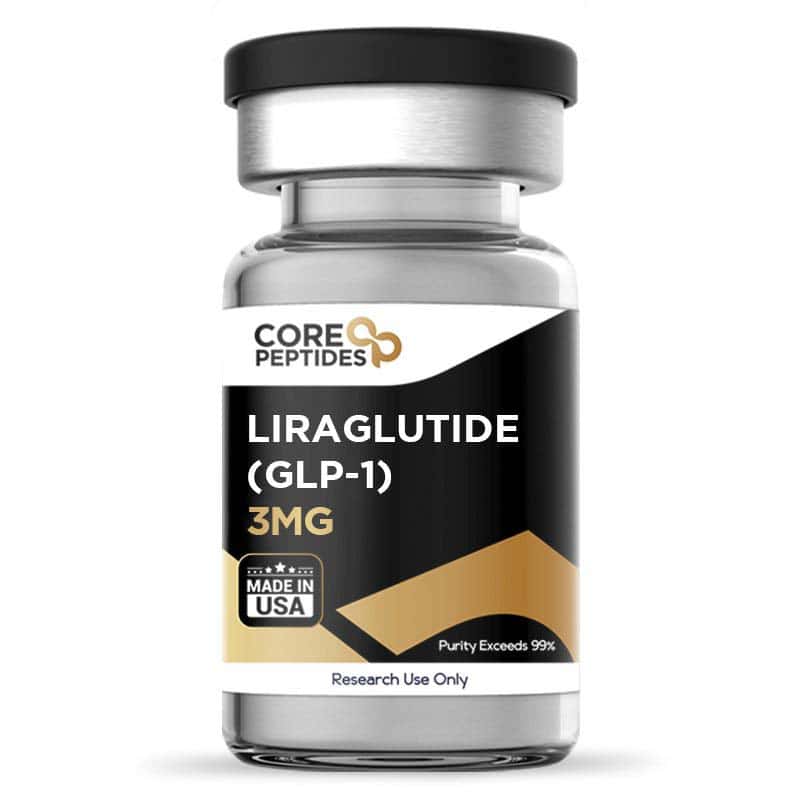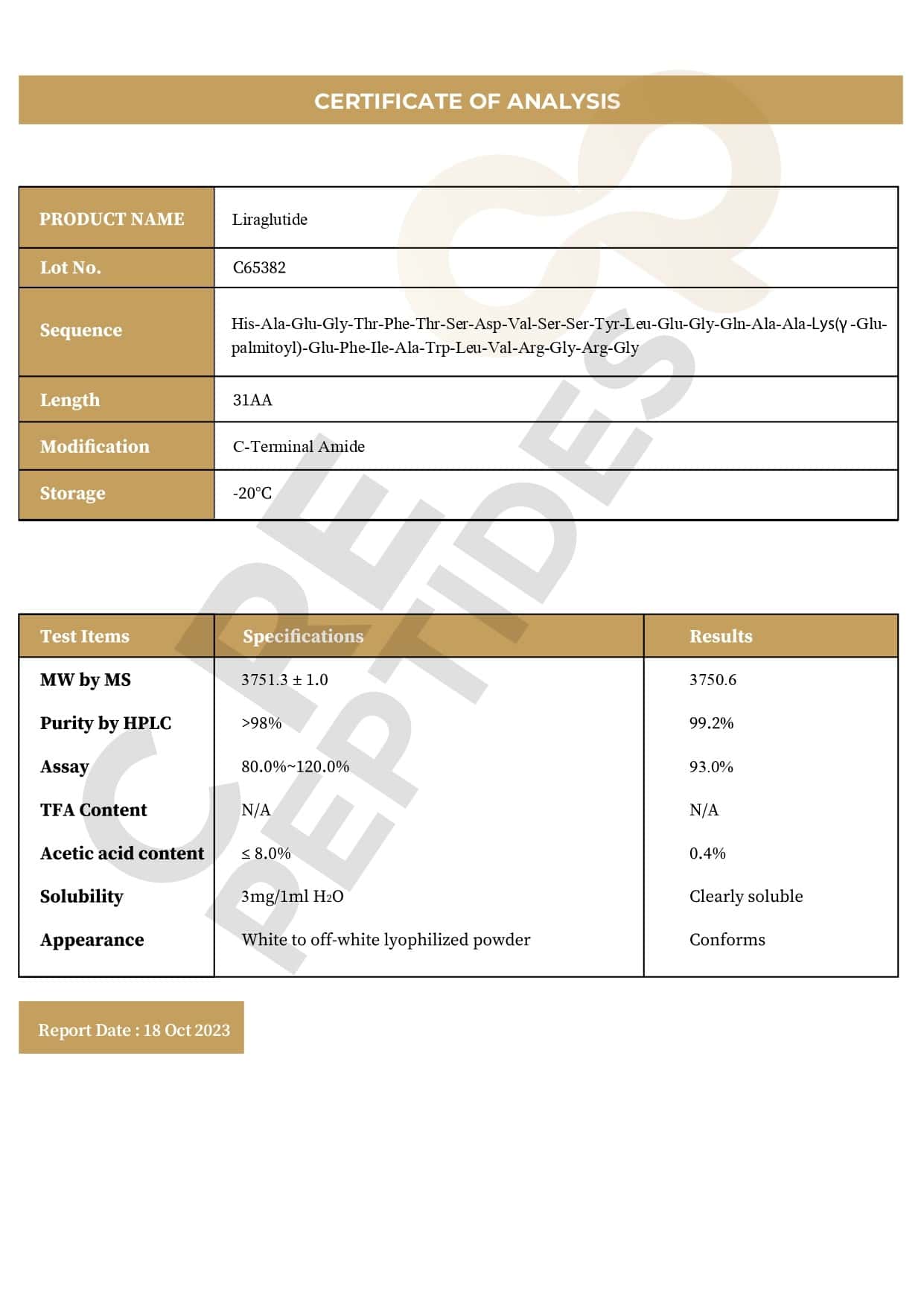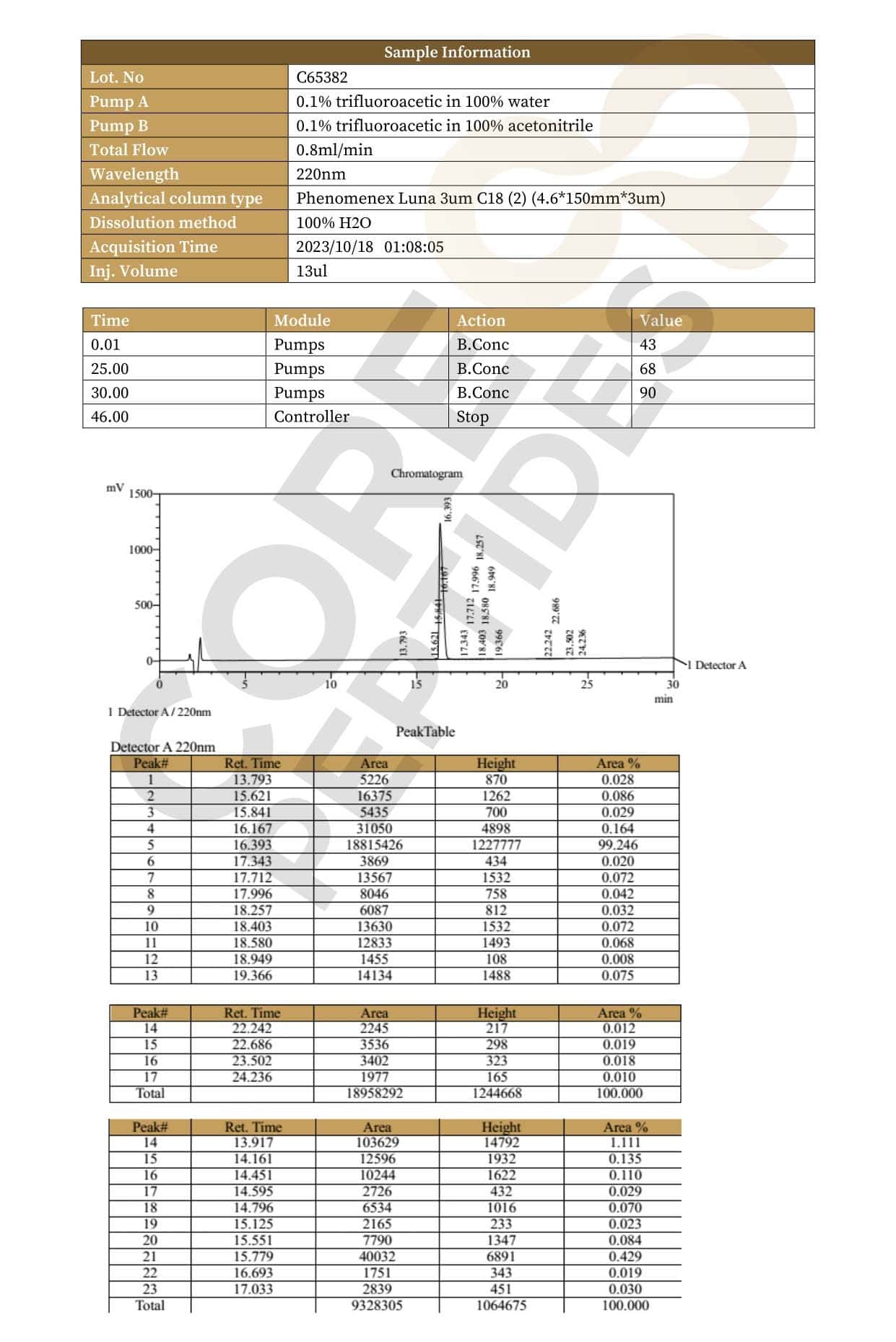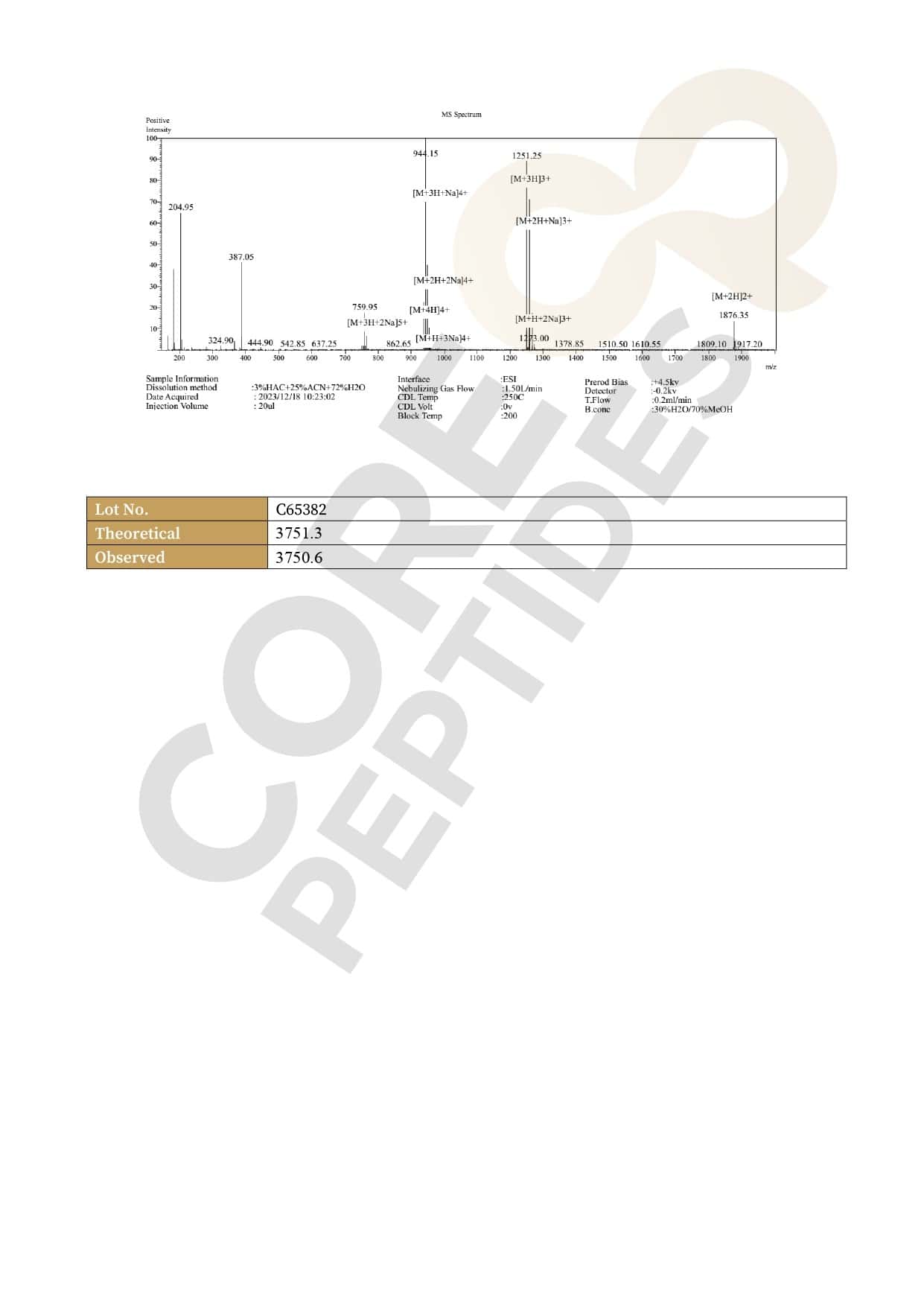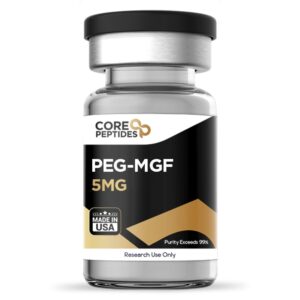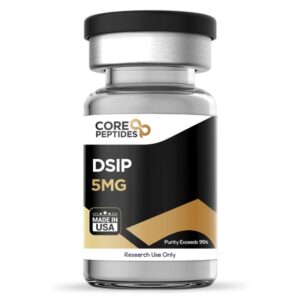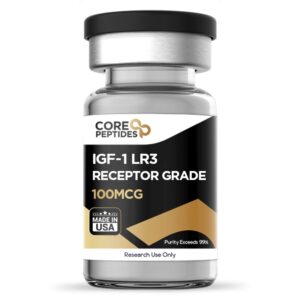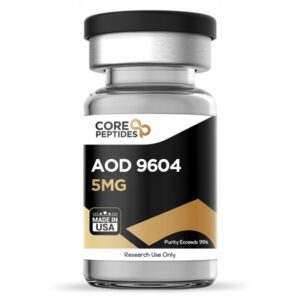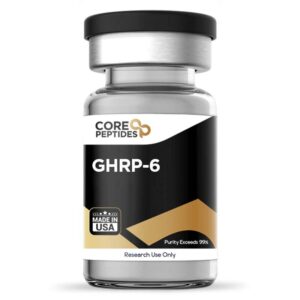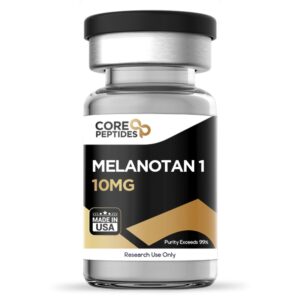Liraglutide (GLP-1) (3mg)
$48.00
Size: 3mg
Contents: Liraglutide (GLP-1) (3mg)
Form: Lyophilized powder
Purity: >99%
SKU: P-Liraglutide
FREE Shipping on $200+ orders
FREE Bacteriostatic Water (30ml) on $200+ orders
Discount per Quantity
| Quantity | Discount | Price |
|---|---|---|
| 5 - 8 | 5% | $45.60 |
| 9 + | 10% | $43.20 |
Liraglutide Peptide
Liraglutide is a polypeptide analog of the naturally occurring protein GLP-1 (glucagon-like peptide), containing 31 amino acids. It is 97% structurally similar to GLP-1, and scientists classify it as a lipopeptide, comprising the amino acid arginine and a hexadecanoyl group.(1)
Researchers speculate that due to its structural similarities, Liraglutide may mimic the action of GLP-1, an endogenous hormone produced in the intestine. GLP-1 is considered to increase insulin production and delay gastric emptying following consumption. Liraglutide may also activate the satiety centers in the central nervous system, inducing a feeling of fullness. Furthermore, it may stimulate insulin release from the beta cells in the pancreas, lowering postprandial blood glucose levels and supporting blood sugar control.
Overview
Liraglutide, similar to GLP-1, may induce what scientists call an "incretin action," a term coined by Dr. Holst.(2) Incretins are considered to be the metabolic hormones released in the gastrointestinal tract to stimulate insulin secretion to diminish blood sugar levels. More specifically, GLP-1 receptors are located on the surface of beta cells found in the pancreas, indicating a potential for GLP-1 to bind to this receptor, thereby inducing insulin release exocytosis.
When combined with other compounds, the action of Liraglutide may be amplified. A 2007 study was conducted where the Liraglutide peptide was introduced into a rat pancreas alongside a sulfonylurea compound. The study results noted that: "GLP-1 administration to isolated perfused rat pancreases at low perfusate glucose concentrations normally does not affect insulin secretion but resulted in dramatic stimulation of insulin secretion after pretreatment with sulfonylurea".(2)
Here is a summary of some of the most notable Liraglutide experiments:
- A study conducted in 2006 suggested that GLP-1 may inhibit the death of pancreatic beta cells and protect the islet cells from future destruction.(3)
- Liraglutide may possibly induce satiety and reduce food intake. Recent preclinical studies suggest that when mice were exposed to Liraglutide peptide twice daily, it induced gradual, linear weight loss and decreased appetite.(4) Liraglutide may help decrease the risk of blood sugar and insulin complications by potentially reducing excessive weight.
- Due to the presence of GLP-1 receptors throughout cardiac muscle, Liraglutide may potentially regulate cardiac function, boost heart rate, and reduce blood pressure. Liraglutide has been suggested to act via binding, stimulating glucose uptake within the cardiac muscles, through which the oxygen-derived (ischemic) heart muscles may receive nutritional glucose. A.K. Bose et al. suggested for the first time that GLP-1 may protect the heart against myocardial infarction, stating that "this finding (myocardial protection properties of GLP-1 and its analogs) may represent a new … potential for this class of [peptide] that also appears to involve activating multiple prosurvival kinases." (5)
- The peptide appears to bind with receptors in the brain, possibly leading to enhancements in the "associative and spatial learning" abilities of mice. Matthew J. During states, "GLP-1R represents a promising new target for cognitive-enhancing and neuroprotective [research]." (6)
Chemical Makeup
Molecular Formula: C172H265N43O51
Molecular Weight: 3751.24 g/mol
Other Known Titles: NN2211
Liraglutide Research and Clinical Studies
Liraglutide and Pancreatic Receptors
Studies posit that the Liraglutide peptide may have distinct actions on pancreatic α-cells and β-cells, particularly regarding cell viability, apoptosis, and secretion capabilities.(7) This differentiation is apparently mediated by the cAMP-PKA signaling pathway and the regulation of microRNA-375 (miR-375). For α-cells, represented in vitro by the α-TC1-6 cell line, Liraglutide seems to increase miR-375 levels and promote apoptosis through inhibition of the cAMP-PKA signal pathway. This action potentially leads to a reduction in glucagon secretion from α-cells. Glucagon is posited to be a hormone that increases blood sugar levels. More specifically, the process seems to involve the decrease of cAMP levels and subsequent modulation of the cAMP-PKA pathway activity. Conversely, in β-cells, represented by the β-TC-tet cell line, Liraglutide appears to activate the cAMP-PKA signal pathway, possibly resulting in the down-regulation of miR-375 and improved cell viability. This activation may be associated with an enhancement of insulin secretion in a concentration-dependent manner, suggesting that Liraglutide may promote β-cell function through these mechanisms. These observations indicate that Liraglutide may have the potential to differentially regulate pancreatic α and β cell functions through mechanisms involving the cAMP-PKA signaling pathway and miR-375. The study highlights the complexity of Liraglutide's actions at the cellular level, suggesting that its actions on α-cells and β-cells may be mediated through distinct molecular mechanisms. These findings offer a possible explanation for Liraglutide's potential in improving glycemic control by simultaneously enhancing insulin secretion and suppressing glucagon secretion.(7)
Liraglutide and Gastric Motility
Studies have observed that 1-hour gastric emptying may be reduced by 23% following exposure to Liraglutide, as observed in studies comparing the peptide to a placebo compound. This suggests that Liraglutide may initially delay gastric emptying. However, there was no significant difference in the 5-hour gastric emptying time (AUC0–300 min) between Liraglutide and the placebo. This apparent short-term postprandial reduction in motility may, however, be sufficient to induce early satiety.(8) Liraglutide has been hypothesized to slow down gastric emptying through a multifaceted mechanism, potentially involving complex interactions with neural circuits that engage GLP-1 receptors both in the central nervous system (CNS) and the peripheral nervous system. This intricate process may begin when Liraglutide activates GLP-1Rs expressed on enteroendocrine cells in the gut. These cells are posited to respond to food intake by secreting GLP-1, which Liraglutide may mimic, thereby enhancing the hormone's natural actions. Upon activation by Liraglutide, GLP-1Rs on enteroendocrine cells may signal through the enteric nervous system, which governs the gastrointestinal tract's motility. The engagement of these receptors is thought to modulate neural pathways responsible for controlling the pace at which the stomach contracts and releases its contents into the small intestine. This modulation likely reduces the gastric motility rate, leading to slower gastric emptying. Simultaneously, Liraglutide’s activation of GLP-1Rs may also signal through the vagal nerve to the CNS. This central signaling pathway may further influence gastric motility by modulating autonomic outputs back to the stomach, reinforcing the slowdown in gastric emptying.(9)
Liraglutide and Central Satiety-Inducing Mechanisms
Research has posited that Liraglutide‘s potential action on weight reduction in murine models may possibly be independent of GLP-1 receptors (GLP-1Rs) in the vagus nerve, area postrema, and paraventricular nucleus.(10) Researchers suggest the possibility that Liraglutide's pathways for influencing weight may circumvent or operate alongside traditional GLP-1R-mediated mechanisms within complex neural circuits. Following the introduction of fluorescently labeled Liraglutide in murine models, researchers reported an observed presence of the compound in the circumventricular organs of the brain, indicating a direct pathway through which Liraglutide might impact brain functions associated with appetite control and weight. The hypothalamus's arcuate nucleus (ARC) is considered a pivotal brain region for energy balance and appetite regulation. It is considered to house two critical populations of neurons: one that produces proopiomelanocortin (POMC) and cocaine- and amphetamine-regulated transcript (CART), which are involved in reducing appetite, and another that produces neuropeptide Y (NPY) and agouti-related peptide (AgRP), which are involved in increasing appetite. Liraglutide was apparently found to bind to neurons within the ARC and other hypothalamic regions, specifically associating with GLP-1R. This selective binding in GLP-1R competent models, and not in GLP-1R deficient (Glp1r–/–) murine models, implies the ARC's potentially significant role in mediating Liraglutide’s actions, possibly through a direct engagement with GLP-1Rs in this area.
POMC/CART neurons may play a central role in satiety and energy expenditure, partly through the release of α-melanocyte-stimulating hormone (α-MSH), which is considered to bind to melanocortin-4 receptors (MC4R) to reduce food intake. Conversely, NPY and AgRP neurons may have the potential to stimulate appetite, with NPY acting as a potent orexigenic peptide and AgRP acting as an antagonist/inverse agonist at MC4R, promoting food intake. The apparent balance between these neurons may be essential for maintaining energy homeostasis. It is hypothesized that Liraglutide might be internalized in neurons expressing POMC and CART, which have been linked to appetite suppression. Electrophysiological measurements suggested that GLP-1 might directly stimulate POMC/CART neurons and indirectly inhibit neurotransmission in neurons expressing NPY and AgRP via GABA-dependent signaling. Gamma-aminobutyric acid (GABA), considered the brain's primary inhibitory neurotransmitter, may play a significant role in this mechanism. By facilitating GABAergic signaling, Liraglutide may potentially reduce the activity of orexigenic NPY/AgRP neurons, further tilting the balance towards satiety. These findings propose a dual mechanism through which Liraglutide may potentially foster satiety and decrease food intake by activating anorexigenic POMC/CART pathways and inhibiting orexigenic NPY/AgRP pathways through GABA-dependent signaling.(10)
Liraglutide and Adipose Tissue Interactions
Studies have speculated that Liraglutide may interact with adipose tissue and influence the levels of critical hormones such as leptin and peptide YY (PYY), which are considered to contribute pivotal roles in regulating energy balance and satiety.(11) Adipose tissue is considered a key player in energy storage and hormone production and may potentially be influenced by Liraglutide’s mechanisms. While direct data remains to be seen, it is conceivable that Liraglutide might enhance the functionality of adipocytes, possibly contributing to a more favorable metabolic profile. This might involve the modulation of adipokines, cytokines produced by adipose tissue, by potentially improving insulin sensitivity and reducing inflammation associated with obesity. Leptin, which adipocytes may primarily secrete, signals the brain to potentially reduce food intake and increase energy expenditure. It has been hypothesized that weight loss may lead to decreased leptin levels, which might signal the organism to increase food intake and decrease metabolic rate, thereby counteracting the weight loss. Liraglutide's potential to moderate leptin levels, perhaps by minimizing the decrease in leptin following weight loss or by improving leptin sensitivity, may represent a mechanism by which it can aid in weight loss maintenance. PYY, a hormone released by the gut in response to food intake, has also been suggested to increase satiety and reduce appetite. Speculative data suggests that Liraglutide might elevate PYY levels, augmenting its appetite-suppressing actions. This interaction may play a role in the observed reduction in energy intake and body weight in research models exposed to Liraglutide in controlled laboratory environments.(11)
Liraglutide peptide is available for research and laboratory purposes only. Please review and adhere to our Terms and Conditions before ordering.
References:
- National Center for Biotechnology Information (2022). PubChem Compound Summary for CID 16134956, Liraglutide.
- Holst JJ. The physiology of glucagon-like peptide 1. Physiol Rev. 2007 Oct;87(4):1409-39. DOI: 10.1152/physrev.00034.2006. PMID: 17928588. https://pubmed.ncbi.nlm.nih.gov/17928588/
- Tandong Yang, Meng Chen, Jeffrey D. Carter, Craig S. Nunemaker, James C. Garmey, Sarah D. Kimble, Jerry L. Nadler, Combined treatment with lisofylline and exendin-4 reverses autoimmune diabetes, Biochemical and Biophysical Research Communications, Volume 344, Issue 3, 2006, Pages 1017-1022, ISSN 0006-291X, https://www.sciencedirect.com/science/article/pii/S0006291X06007066
- Blonde L, Klein EJ, Han J, Zhang B, Mac SM, Poon TH, Taylor KL, Trautmann ME, Kim DD, Kendall DM. Interim analysis of the effects of exenatide treatment on A1C, weight and cardiovascular risk factors over 82 weeks in 314 overweight patients with type 2 diabetes. https://pubmed.ncbi.nlm.nih.gov/16776751/
- Bose AK, Mocanu MM, Carr RD, Brand CL, Yellon DM. Glucagon-like peptide 1 can directly protect the heart against ischemia/reperfusion injury. Diabetes. 2005. https://pubmed.ncbi.nlm.nih.gov/15616022/
- During MJ, Cao L, Zuzga DS, Francis JS, Fitzsimons HL, Jiao X, Bland RJ, Klugmann M, Banks WA, Drucker DJ, Haile CN. Glucagon-like peptide-1 receptor is involved in learning and neuroprotection. Nat Med. 2003 Sep; https://pubmed.ncbi.nlm.nih.gov/12925848
- Xu X, Chen J, Hu L, Liang M, Wang X, Feng S, Shen J, Luan X. Liraglutide regulates the viability of pancreatic α-cells and pancreatic β-cells through cAMP-PKA signal pathway. Life Sci. 2018 Feb 15;195:87-94. doi: 10.1016/j.lfs.2017.12.012. Epub 2017 Dec 7. PMID: 29225111.
- van Can J, Sloth B, Jensen CB, Flint A, Blaak EE, Saris WH. Effects of the once-daily GLP-1 analog liraglutide on gastric emptying, glycemic parameters, appetite and energy metabolism in obese, non-diabetic adults. Int J Obes (Lond). 2014 Jun;38(6):784-93. doi: 10.1038/ijo.2013.162. Epub 2013 Sep 3. PMID: 23999198; PMCID: PMC4052428.
- Drucker DJ. Mechanisms of Action and Therapeutic Application of Glucagon-like Peptide-1. Cell Metab. 2018 Apr 3;27(4):740-756. doi: 10.1016/j.cmet.2018.03.001. PMID: 29617641.
- Secher A, Jelsing J, Baquero AF, Hecksher-Sørensen J, Cowley MA, Dalbøge LS, Hansen G, Grove KL, Pyke C, Raun K, Schäffer L, Tang-Christensen M, Verma S, Witgen BM, Vrang N, Bjerre Knudsen L. The arcuate nucleus mediates GLP-1 receptor agonist liraglutide-dependent weight loss. J Clin Invest. 2014 Oct;124(10):4473-88. doi: 10.1172/JCI75276. Epub 2014 Sep 9. PMID: 25202980; PMCID: PMC4215190.
- Ard J, Fitch A, Fruh S, Herman L. Weight Loss and Maintenance Related to the Mechanism of Action of Glucagon-Like Peptide 1 Receptor Agonists. Adv Ther. 2021 Jun;38(6):2821-2839. doi: 10.1007/s12325-021-01710-0. Epub 2021 May 11. PMID: 33977495; PMCID: PMC8189979.

